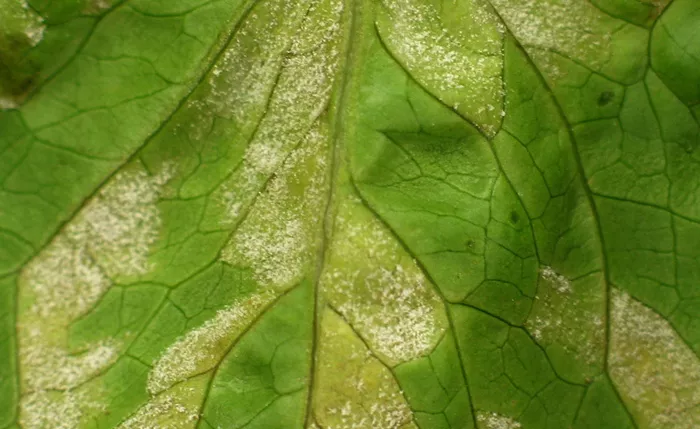Gardening is an incredibly rewarding hobby, but like any other pursuit, it requires knowledge and attention to detail. Among the many challenges a gardener might face, diseases such as downy mildew can quickly become an issue, especially when plant care is not optimized. This disease thrives in certain conditions and can wreak havoc on a variety of plants. In this blog post, we will discuss eight common plant care mistakes that can foster the perfect environment for downy mildew to develop. By learning to avoid these errors, you can better protect your plants and enjoy a healthy garden year-round.
8 Common Plant Care Mistakes That Can Cause Downy Mildew
1. Overwatering Your Plants
One of the most common mistakes gardeners make is overwatering. While plants need water to survive, providing too much moisture can create ideal conditions for fungi like downy mildew. This disease prefers damp, humid environments and thrives in soils that retain excessive moisture.
How to Prevent It:
Ensure your plants have proper drainage. Water your plants early in the morning so that they have time to dry out before the evening. Also, use well-draining soil and consider investing in raised beds or containers to help prevent waterlogging. Always check the soil’s moisture level before watering again.
2. Poor Air Circulation
Downy mildew loves still, humid air. If your plants are crowded together or are growing in areas with little airflow, they are more likely to succumb to fungal diseases like downy mildew.
How to Prevent It:
Space your plants appropriately to allow air to circulate freely between them. This will help reduce humidity levels around the plants and prevent fungal spores from thriving. Pruning also helps with air circulation, especially in dense plantings. For plants grown indoors, consider using fans or opening windows to improve ventilation.
3. Planting in the Wrong Location
Certain plants are more susceptible to downy mildew than others, and planting them in the wrong location can increase their vulnerability. For example, shady, moist areas are a haven for downy mildew.
How to Prevent It:
Choose the right location for each plant according to its sunlight requirements. Plants that require full sun should be placed in areas that receive at least 6-8 hours of direct sunlight daily. Avoid planting mildew-prone plants in shaded or overly moist locations.
4. Failure to Remove Infected Plant Debris
Once downy mildew takes hold, it can spread rapidly to other plants if the infected plant material is left to decompose on the ground. Spores can survive in dead plant matter, leading to reinfection and even spreading the disease to healthy plants.
How to Prevent It:
Regularly remove dead leaves, flowers, or any other plant material that may harbor fungal spores. Dispose of infected plant parts properly—do not compost them. Clean up fallen leaves and dead debris from around your plants to prevent further infection.
5. Not Practicing Crop Rotation
Growing the same plants in the same spot year after year can encourage the buildup of pests and diseases, including downy mildew. This happens because fungi and other pathogens can survive in the soil and infect subsequent crops.
How to Prevent It:
Practice crop rotation in your garden. By changing the location of your plants every year, you can break the cycle of fungal spores and other pathogens. This is particularly important for plants that are susceptible to diseases like downy mildew, including lettuce, cucumbers, and spinach.
6. Ignoring the Plant’s Watering Needs
Different plants have different watering requirements. Some require more moisture than others, and giving them too much or too little water can stress the plant, making it more susceptible to diseases like downy mildew.
How to Prevent It:
Learn the specific watering needs of each plant in your garden. Some plants, such as succulents, prefer dry soil, while others, like hydrangeas, thrive in consistently moist conditions. Check the soil moisture levels regularly and adjust your watering schedule accordingly to meet the needs of your plants.
7. Using Infected Tools or Equipment
Garden tools and equipment can be carriers of downy mildew spores. If you use contaminated tools on healthy plants, you may inadvertently spread the disease to other parts of your garden.
How to Prevent It:
Regularly clean and disinfect your gardening tools and equipment. After each use, wipe down tools with a mixture of water and bleach or rubbing alcohol to kill any potential spores. This will help prevent the spread of downy mildew and other diseases throughout your garden.
8. Neglecting to Apply Preventative Fungicide
Preventative fungicide treatments are often overlooked by gardeners. However, these treatments can be a valuable tool in protecting your plants from downy mildew and other fungal diseases before they take hold.
How to Prevent It:
Consider applying an organic fungicide to your plants at the start of the growing season. This can help create a protective barrier that reduces the likelihood of downy mildew taking root. Be sure to follow the manufacturer’s instructions and reapply as needed, especially after heavy rainfall.
Conclusion
Downy mildew is a persistent and troublesome disease that can damage a wide variety of plants in your garden. However, with the right care and attention, you can significantly reduce the risk of infection. By avoiding the common plant care mistakes outlined in this post, you can help create an environment where your plants can thrive without the threat of downy mildew. Proper watering, ensuring good airflow, removing infected material, and using preventive treatments are just a few of the steps you can take to protect your garden. With these strategies, you can enjoy a lush, healthy garden throughout the seasons.


